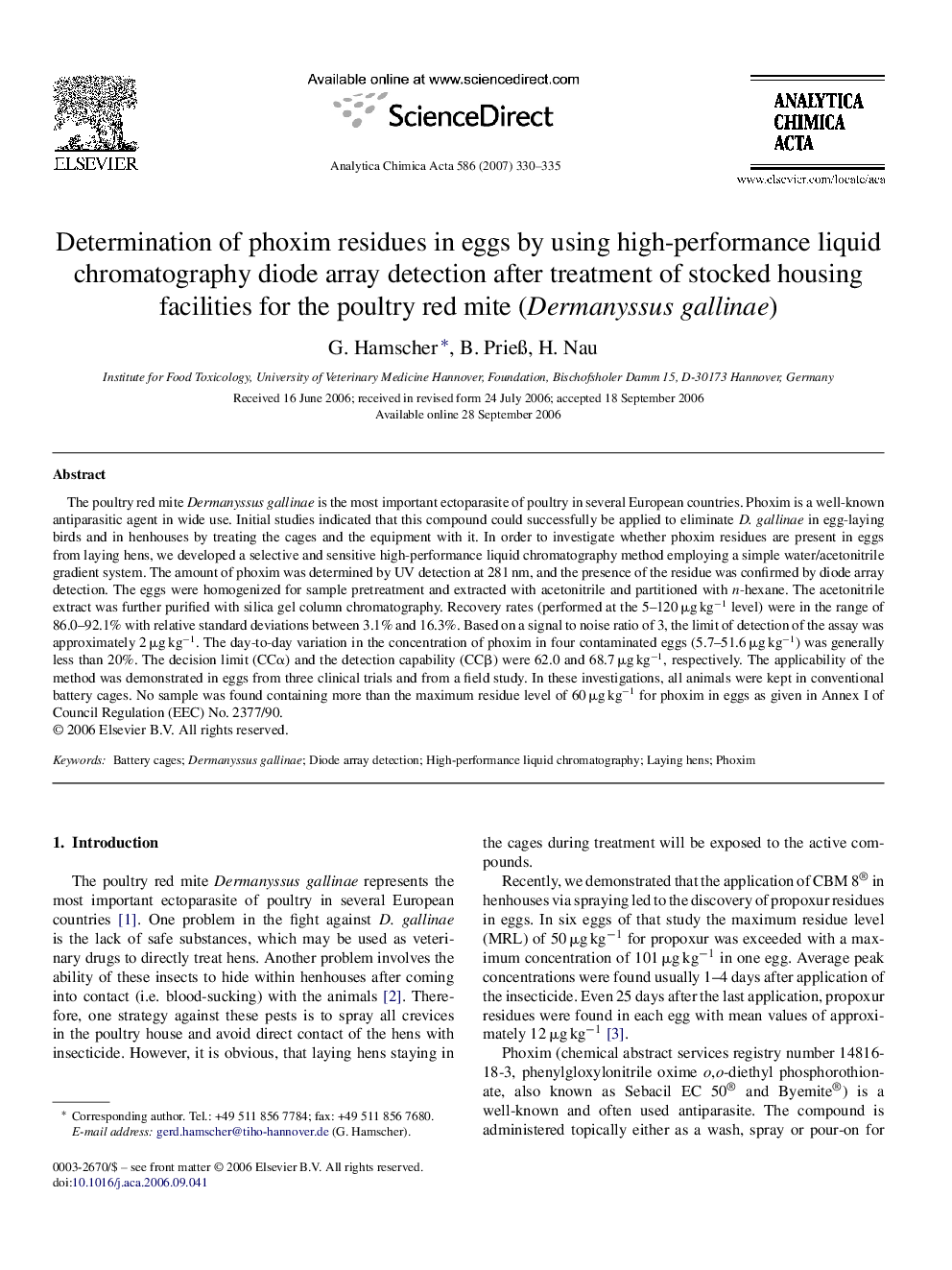| Article ID | Journal | Published Year | Pages | File Type |
|---|---|---|---|---|
| 1170713 | Analytica Chimica Acta | 2007 | 6 Pages |
The poultry red mite Dermanyssus gallinae is the most important ectoparasite of poultry in several European countries. Phoxim is a well-known antiparasitic agent in wide use. Initial studies indicated that this compound could successfully be applied to eliminate D. gallinae in egg-laying birds and in henhouses by treating the cages and the equipment with it. In order to investigate whether phoxim residues are present in eggs from laying hens, we developed a selective and sensitive high-performance liquid chromatography method employing a simple water/acetonitrile gradient system. The amount of phoxim was determined by UV detection at 281 nm, and the presence of the residue was confirmed by diode array detection. The eggs were homogenized for sample pretreatment and extracted with acetonitrile and partitioned with n-hexane. The acetonitrile extract was further purified with silica gel column chromatography. Recovery rates (performed at the 5–120 μg kg−1 level) were in the range of 86.0–92.1% with relative standard deviations between 3.1% and 16.3%. Based on a signal to noise ratio of 3, the limit of detection of the assay was approximately 2 μg kg−1. The day-to-day variation in the concentration of phoxim in four contaminated eggs (5.7–51.6 μg kg−1) was generally less than 20%. The decision limit (CCα) and the detection capability (CCβ) were 62.0 and 68.7 μg kg−1, respectively. The applicability of the method was demonstrated in eggs from three clinical trials and from a field study. In these investigations, all animals were kept in conventional battery cages. No sample was found containing more than the maximum residue level of 60 μg kg−1 for phoxim in eggs as given in Annex I of Council Regulation (EEC) No. 2377/90.
